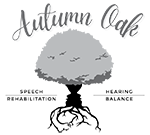Considering Traveling by Plane This Summer? Here is Some Information About Air Travel and Ear Pain (and what you can do to avoid it).
Jun 23, 2021Many of us didn’t travel much in 2020, especially by airplane. It can be exciting to think about flying to a new destination (or an old favorite) again soon, but air travel isn’t all sunshine and flowers. For one thing, you never know how long the security line will be at the airport. Then there’s the issue of packing—how can you possibly fit everything you need into just one or two bags? And once you get on the airplane and you’re heading up into the sky, there’s the dreaded ear pain. Here are some easy tips to avoid ear pain while traveling by air.
What Causes Ear Pain during Air Travel?
The issue with ear pain and air travel is due to air pressure. When the air pressure inside and outside the inner ear are the same, as they usually are, you do not have ear pain. But when you rapidly change altitude, as you do when traveling by plane, the pressure inside and outside of the inner ear does not have time to equalize. This is what causes ear pain while traveling by air, and it is called ear barotrauma.
How Can You Prevent Ear Pain during Air Travel?
The key is to help the air pressure equalize inside and outside of the inner ear. This is the job of the Eustachian tube, which ensures that the air in the middle ear is being constantly replenished. That air is then absorbed into the membranes of the inner ear. To help this process, you can introduce as much air as possible until the pressure equalizes. Here are a few ways to do that:
- Swallow.
When you swallow, you might hear a clicking or popping sound. That sound is a tiny bubble of air that has moved from the back of the nose into the inner ear via the Eustachian tube. During air travel, opening the Eustachian tube more frequently by swallowing helps to accommodate the change in air pressure. - Chew gum or suck on hard candy.
Chewing gum or sucking on hard candy can stimulate more frequent swallowing. This, in turn, opens the Eustachian tube and helps to equalize the air pressure. - Try the Valsalva maneuver.
More commonly known as “clearing your ears,” the Valsalva maneuver opens the Eustachian tube and helps to equalize the air pressure. To do this, take a mouthful of air, close your mouth, pinch your nostrils shut, and gently force air out until your ears pop. do not try this maneuver if you have a cold or allergies because it could cause an ear infection. Instead, you can try the Toynbee maneuver. Close your mouth and nose, and then swallow several times until the pressure equalizes. Both of these techniques can be repeated as necessary.
Here are a few more simple things you can do to prevent ear pain during air travel:
- If you can, stay awake during takeoff (ascent) and landing (descent).
- Drink plenty of fluids both before and during your flight to stay hydrated.
- Yawn.
- Use nasal spray one hour prior to landing and only as needed. Overusing nasal sprays can cause more congestion.
- Take a nasal decongestant one hour before landing, as well as after your flight until your ears normalize.
- If you have young children, help them prevent ear pain by giving them candy such as a lollipop or having them drink through a straw or blow bubbles through a straw. If you have an infant, give them a pacifier or feed them during takeoff and landing.
- If you are ill with a cold, the flu, or allergies, you may want to consider changing your travel plans. Your illness can cause a blockage in the Eustachian tube, which makes it more difficult or even impossible for the air pressure to equalize. This can lead to a ruptured eardrum or severe ear infection, which can lead to hearing loss or ear damage.
To learn more about how you can prevent ear pain while traveling by airplane, we welcome you to contact our hearing practice today. We are eager to help!


